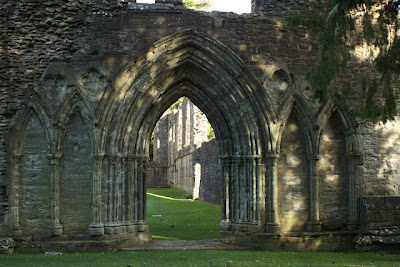Our Scottish Idyll!
Safely home, it's time to reflect a bit on our Scottish idyll. I,
for one, had a marvelous time, painting in sunshine and under clouds. The landscape, as you will know, is one of great
variety, and we were hard-pressed to decide what to tackle next. Here we are,
on the first day, high up in the Queen
Elizabeth National
Forest, just beginning the day's work. The
shifting clouds made ever-changing patterns on the hills, posing a
challenge in terms of fixing a specific motif yet, at the same time, creating an
exhilarating sense of the sky on the move.

Our second day found us along the edge of Loch Venachar, amid a
grove of trees. During our time there we were questioned by some curious park
rangers, eager to note that the spot was full of landscape painters. In fact,
they took quite a number of photos of us. It seems it's possible that we'll be
featured in the National Parks calendar for 2013, illustrating artists using the
great resources of the parks. Perhaps we'll have our own version of Calendar
Girls!
 |
| A landscape painter's dream, I'd say! (photo Christine Elvin) |
On Monday, the skies were sullen, with spitting rain. We decided
that it should be the day to go see the Glasgow Boys in their dedicated space
at the Kelvingrove Art Museum in Glasgow.
The museum (free) is a treasure trove of art and natural history. We spoke
about the Glasgow
boys paintings as we went around the gallery, seeing some familiar work in
person for the first time. We also were entranced by the Raeburn portraits and
by Bastien-Lepage's La Pauvre Fauvette.
 |
| James Guthrie, Hard At It |
 |
| Henry Raeburn, Mrs. William Urquhart |
 |
| Jules Bastien-Lepage, La Pauvre Fauvette | | | | | |
|
On day four, we were off to Inchmahome Priory on the island
of Inchmahome, smack in the middle of
the Lake of Mentieth. Here's the island from the
air.
And here we are, waiting to board the twelve-person 'ferry' to the
island.
A view of the church at Port of Mentieth as we embarked.
Once we arrived at Inchmahome, we found ourselves in a magical
landscape---the ruins of the 13th century Priory of the Augustinian canons didn't
disappoint.
We had a great day of painting, so much so that we all agreed to
go back the next day. As luck would have it, we had a birthday girl among us.
Compliments of the owners of our B&B, we had a lovely chocolate cake with
which to celebrate. But where's the birthday girl---Big Red? She's not in the photo!
My kind students suggested that I take the morning to paint just for myself, without doing a demonstration. I hie'd me to the adjacent woods where there are three remaining sweet chestnuts, planted by the canons four-hundred plus years ago. (A photo of the painting will be in my next post.)
The afternoon brought the rounds of helping students as they forged ahead with their work.
We were sorry to leave at day's end. It had been a magical two days, far removed from the world, thrust, seemingly, deep into the middle ages.
The town where we all were staying was a wonderful place. All of our accommodations were great, and we received much help from the folks at the tourist board, and from the hosts of our B&Bs. Here are some different photos of the early morning in Callander. The River Teith winds through an area called Callander Meadows, right along the main street.
And everyone's favorite hardware store in Callander:
On our last painting day, we were somewhat confounded by rain in the morning. Set up we did, where I laid in a grisaille of this view.
But those clouds over Ben Ledi continued to mass and, a short moment later, my easel was under a Fenway Park poncho!
In true Scottish fashion, however, the sun came out again after twenty minutes. One of us had retired for the day, with an easel broken by being upset by the wind. Lunch awaited.
Several of us set up again. Of course the clouds amassed anew. Being prudent adults, we decamped for the pub.
Soon we were fortified by real ale and tea, and off we went to an ancient bridge I'd seen.
We all painted good starts, desperately pretending that our magical stay in Scotland was not drawing to a close!
The night before, we had all dined together at Callander Meadows, a lovely restaurant on Callander's Main Street. I, of course, had to have the sticky toffee pudding for dessert.
On Saturday, class over, we were off in different directions, using our few remaining precious days in Scotland. Some were off to Edinburgh, some into Ayrshire, and others organizing their departure.
We had had a stupendous time. Everyone seemed to make great progress with their work and I found my own head filled with Scottish images, just waiting to burst forth in the studio.
Next February, we expect to be in Savannah, and June will find us in both England and in France. Join a workshop---you come, too! If you'd like me to keep you posted on these three events, or if you wish to sign up, write to me at dbjurney@verizon.net The workshops are quite limited in size, so be in touch soon if you want to be included in our next adventures!
Happy Painting!
p.s. I can truthfully say that I've never, in my many decades of traveling, ever had a better lodging than we had at the Westerton B&B in Callander. Mike and Lesley were the most remarkable hosts, anticipating our every need! We arrived as guests and left as friends. I encourage you to visit them for a truly wonderful Highland experience.

































